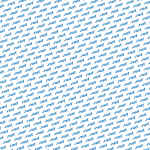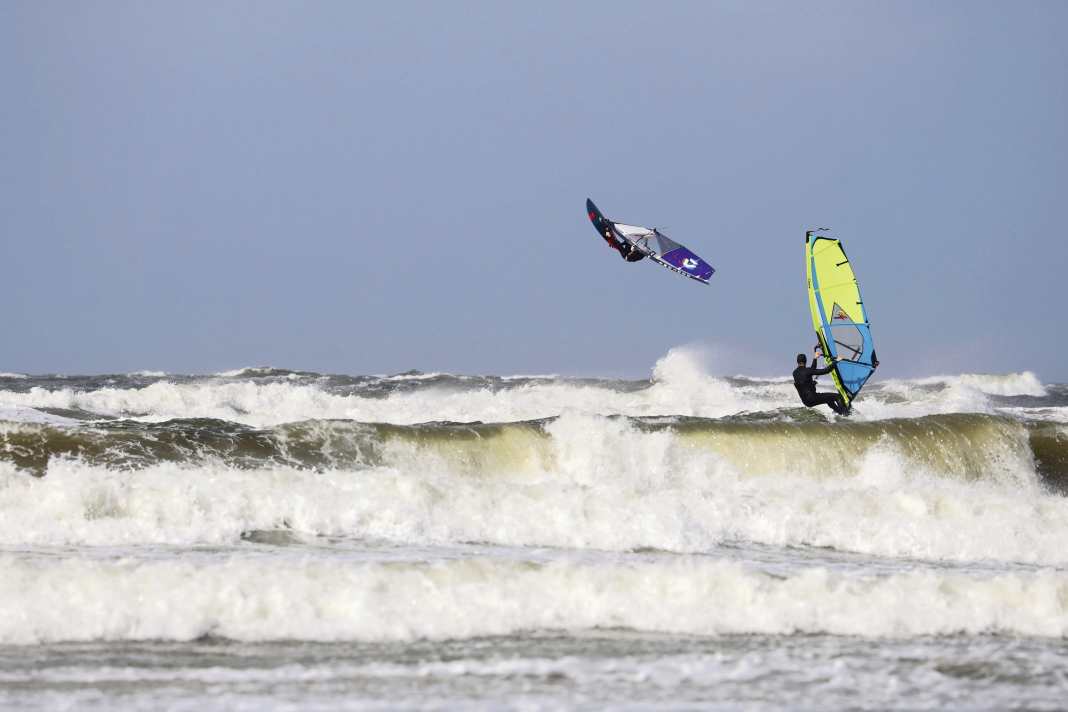





These waveboards are included in the test:
Our test crew was once again able to experience how different even North Sea conditions can be this year. After a day on Rømø with a sideonshore wind, chaotic waves and 4.0 sails at the limit, the boards - and what felt like a wheelbarrow of sand - were packed into the van and it was off to Hanstholm. The day's test impressions had barely been saved as audio files when the list of personal test winners was already being changed again. Instead of North Sea chaos, clean lines now peeled over the reef, blown smooth by the sideoffshore wind. "It's really stunning how different some boards feel in different conditions," summarises tester Marius Gugg. However, this statement does not apply to all boards, as there are definitely all-rounders that simply always work. Other shapes are very special and alternately cause jubilation or long faces.
There are boards that always work well, others only in certain conditions." (Fabian Grundmann, surf tester)
The "perceived size" of the waveboards varies greatly
The boards in the test group are between 83 and 88 litres. However, how "big" a board really feels depends primarily on the shape. With a nominal 87 litres, the Flikka Quad tested is one of the larger wave boards in the group, but due to its narrow tail and round outline, it feels like an 82 through the lineup. This is particularly noticeable when crossing white water and unintentional chop. Conversely, the smallest board in the group, the We One We Wave 83, appears noticeably larger due to its width of 59 centimetres combined with a voluminous tail. Which board from this group can be your personal test winner therefore depends on your riding ability and, above all, the demands you place on your wave board.
Board-Guide Waveboards 85
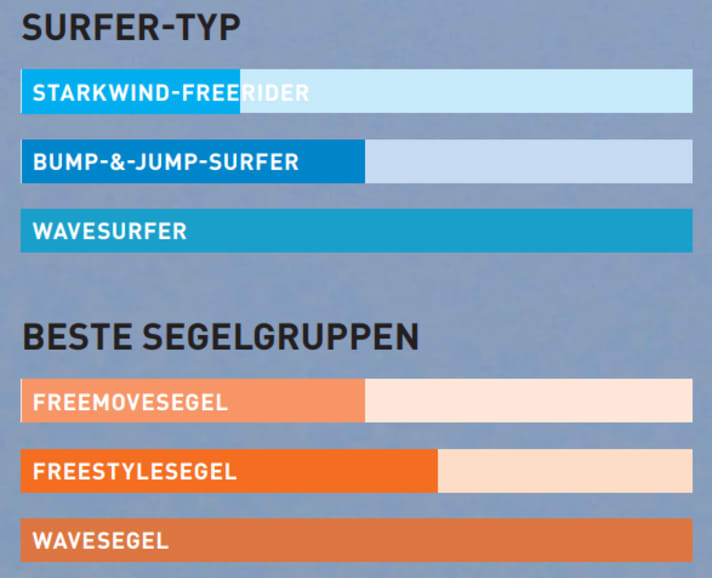
The most exciting details of the 2026 waveboards
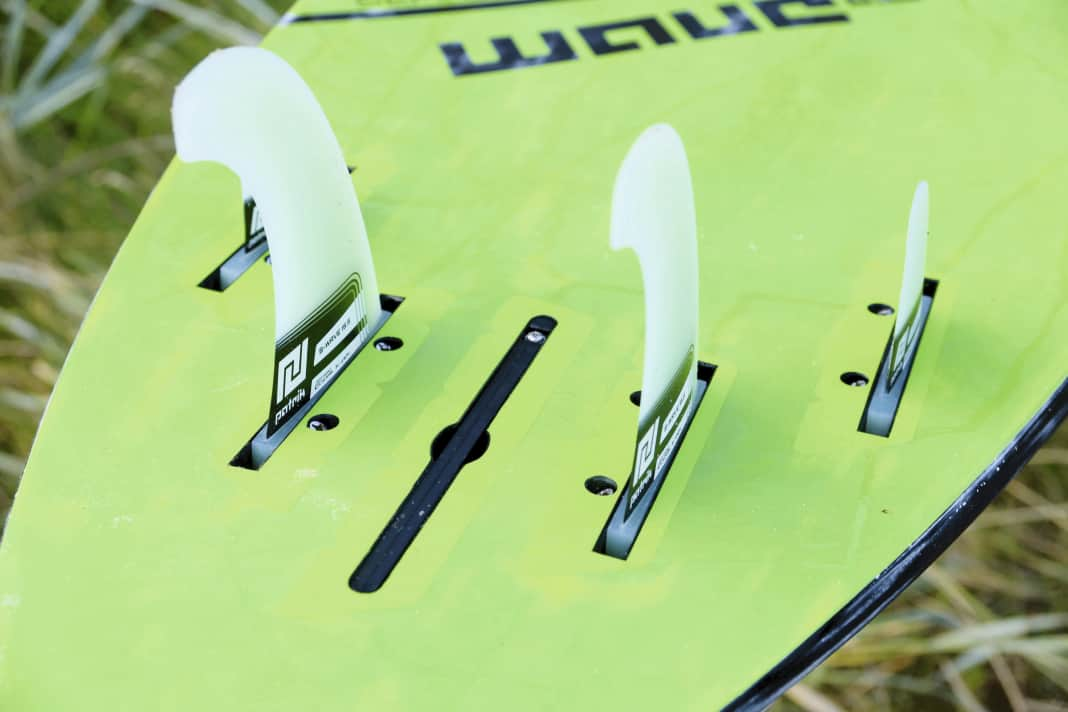





You can find even more details in the individual ratings and in the large gallery: Features, shapes, designs - the 2026 waveboards in the test
The test grades at a glance
As always, we only swapped the boards during testing, with each tester keeping their own sail. We tried out the boards for several days at the North Sea spots of Rømø and Hanstholm. Everything was there, from onshore North Sea chaos to clean waves with side-offshore wind, so the results should once again provide a balanced overview of the strengths and weaknesses.
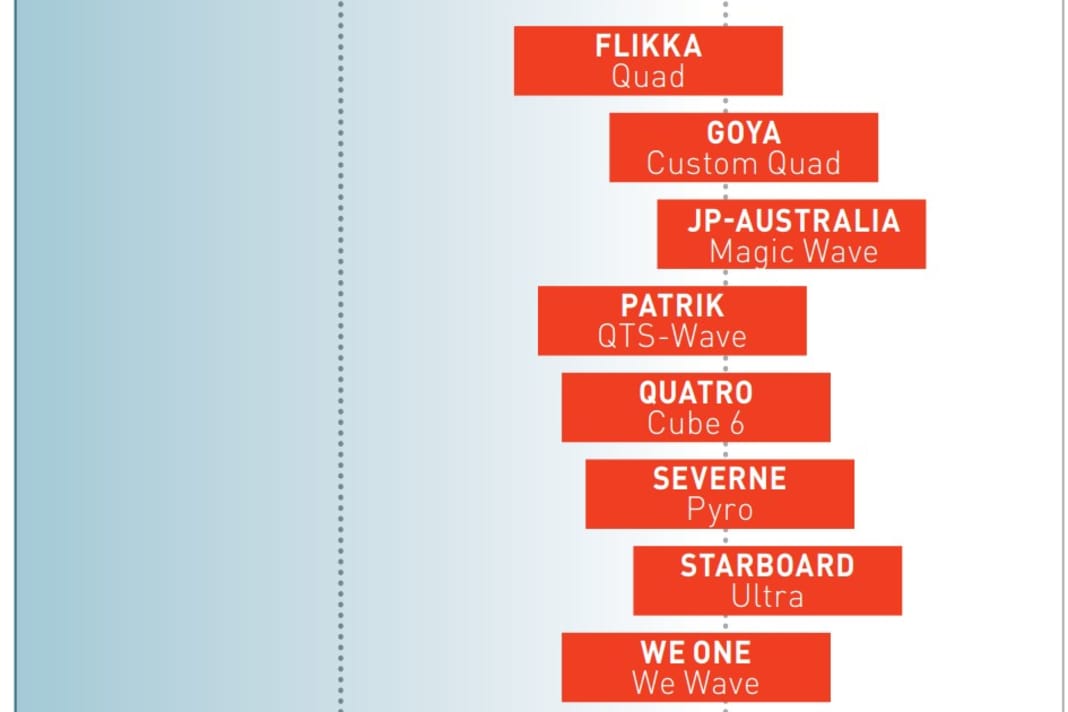





The surf type recommendation for waveboards 85
"Occasional waver" type
Do you dream of endless waves and radical turns every night - but unfortunately the reality is different? Due to a lack of opportunities, do you often have to use your wave board as a strong wind board for flat water or for bump & jump sessions? When you're finally catching swell waves, you naturally want a board with good turning characteristics, but easy planing, good control and good upwind performance are your top priorities? Then you should choose a board that scores particularly well in the following criteria.
- Planing: This grade describes how easily a board gets planing. If a board forgives balancing errors and planes well with a passive riding style, this is the ideal case.
- Maintain speed in the turn: 70 per cent of a good, radical cutback is the result of sufficient speed. In other words: even with the most radical board, you won't make good turns if you park in the bottom turn. Boards with slightly wider tails and less rocker in the tail usually help you arrive at the lip of the wave with more steam.
- Carving rear foot: Those who have less practice in waves and usually surf in moderate waves often have a more upright riding style. Turning is then automatically done more with the back foot. However, this criterion can also be important for experienced surfers, as short snaps from the ankle can be shaken with boards that score points in this category.
If you categorise yourself as an "occasional waver", you certainly won't go wrong with the following models (in alphabetical order): Goya Custom Quad, JP-Australia Magic Wave, Severne Pyro
"Ambitious wave surfer" type
Do you mainly use your waveboard in real swell waves and ride safely frontside downwind? You may have the occasional flat water session, but the bottom line is that waves are your absolute focus? Do you want your board to work at all spots - on the North Sea and Baltic Sea as well as at well-known overseas spots that you sometimes end up travelling to?
If this applies to you, you should, in addition to the "planing" and "rear foot carving" criteria already explained, pay particular attention to the aspect of "Carving front foot" pay attention to. This describes how easily the radii of a board can be varied from wide to tight. For wave moves such as 360s, boards that still turn variably and light-footedly over the front foot even at high speeds have an advantage.
If you categorise yourself as an "ambitious wave surfer", then the following boards are a good option for you (in alphabetical order): Goya Custom Quad, JP-Australia Magic Wave, Patrik QTS-Wave, Quatro Cube, Severne Pyro, Starboard Ultra. Provided you have good skills, the Flikka Custom Quad be an alternative.
For a good cutback, you need speed above all else. That's often more important than maximum turning potential." (Manuel Vogel, surf editor)
"Wave expert" type
Your list of surfed spots extends far beyond the North Sea and Baltic Sea, and you also regularly take trips to spots with big ocean waves. No matter where you hit the waves, do you want a radical, easy-turning board under your feet that also offers potential for tight snaps and wave moves?
You can make up for minor weaknesses in planing and control with your skills, but in addition to the criterion "Carving front foot" look especially on the aspect "Control on the edge". This describes how securely a board stands on the rail when you put yourself into the bottom turn with a template and a lot of speed. If the board cuts through the butter like the proverbial hot knife, it gets top marks here. If a board becomes unstable on the edge more quickly or if it starts to cut, this will be penalised.
The top tips for all wave experts are in alphabetical order: Flikka Custom Quad, Goya Custom Quad, Patrik QTS-Wave, Quatro Cube, Starboard Ultra. With minor compromises in terms of turning ability, the JP-Australia Magic Wave work for this.
The 2026 waveboards in the individual evaluation
Click here for the test reports of the individual boards!
